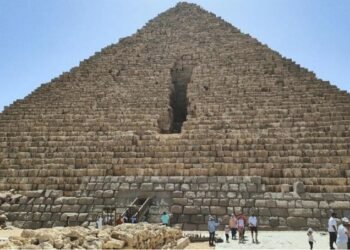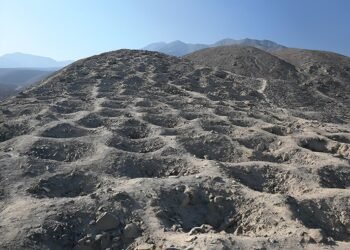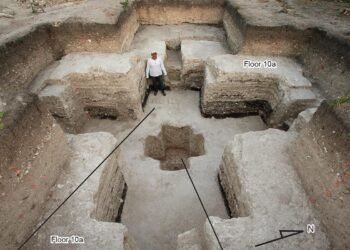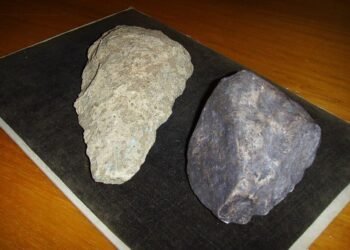Archaeologists in Egypt have discovered the remains of a 3,200-year-old military fort at the Tell Al-Abqain excavation site, located in the northwest Nile Delta, revealing a wealth of artifacts dating back to the reign of Pharaoh Ramesses II.
The excavation, led by Ahmed El Kharadly from Egypt’s Ministry of Tourism and Antiquities, has unearthed a series of mudbrick barracks and storerooms, along with religious tributes and a remarkable bronze sword inscribed with the name of Ramesses II.
The barracks, strategically located along a military road, served as a defensive outpost to protect Egypt’s northwestern borders from potential invaders, such as Libyan tribes and sea peoples. Mohamed Ismail Khaled, secretary-general of Egypt’s Supreme Council of Antiquities, described the site as a key military outpost in ancient Egypt’s defense system. Khaled also highlighted the advanced architectural layout of the barracks, which showcased the engineering expertise of the ancient Egyptians, who skillfully used the landscape to achieve military objectives.
Among the significant discoveries was a bronze sword engraved with Ramesses II’s cartouche—a hieroglyphic signature indicating royal ownership. This sword, believed to have been awarded to a high-ranking officer, serves as a symbol of Ramesses’ power and generosity. Peter Brand, a historian at the University of Memphis, noted that “the king’s name and titles engraved on it increased the prestige of its owner and ‘advertised’ the king’s wealth, power, and generosity.” Brand, who was not part of the excavation, suggested that the weaponry at the site indicated it was well-armed and might have even produced weapons locally.
Archaeologists also found storerooms filled with grain, large ovens, and pottery containing the remains of animals, including fish and cows. Cows held special significance in ancient Egypt as symbols of strength, abundance, and celestial deities, but El Kharadly noted that in this context, the cows were likely used for food. Cow bones were found in a silo near an oven, suggesting they were butchered, dried, and stored for later consumption by the soldiers.
The discovery of two limestone blocks also added to the site’s significance. One of the blocks bore the name of Ramesses II, while the other mentioned an official named Bay, a figure who rose to prominence during the reign of Seti II, Ramesses’ successor. These inscriptions provide additional historical context for the barracks’ role during a period of external threats, particularly from the west.
Ramesses II, often referred to as Ramesses the Great, ruled Egypt from 1279 to 1213 BCE. and was renowned for his military campaigns and monumental building projects. His reign saw the construction of iconic temples such as those at Abu Simbel and Karnak, which were designed to immortalize his legacy. Brand pointed out that while other forts built by Ramesses II have been discovered, none are as well-preserved as this one, making it a unique opportunity to study Egypt’s military organization and logistics during his reign.






















